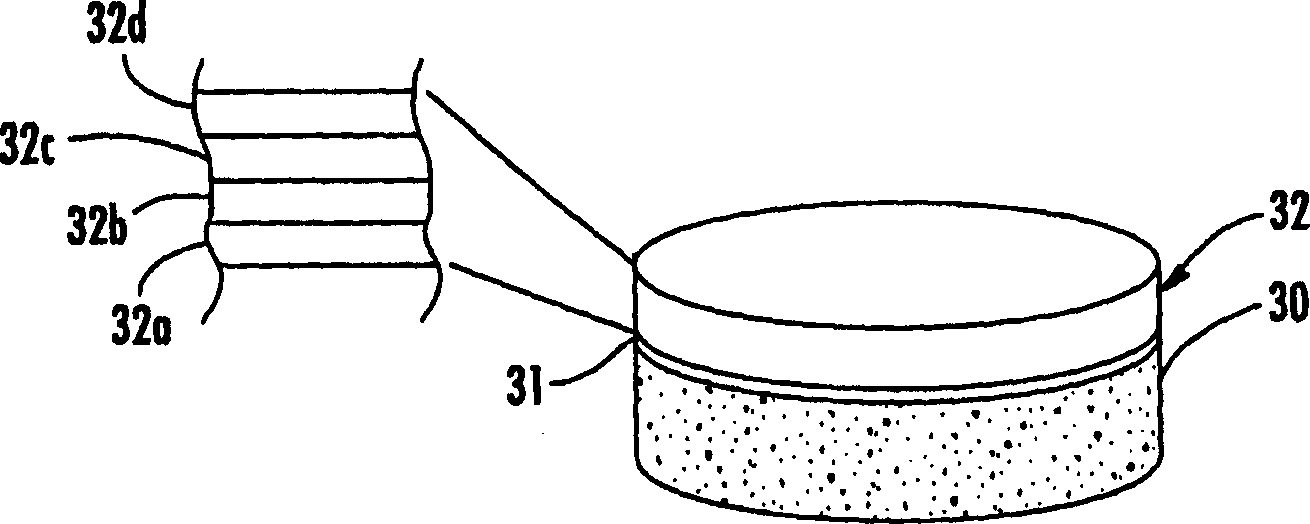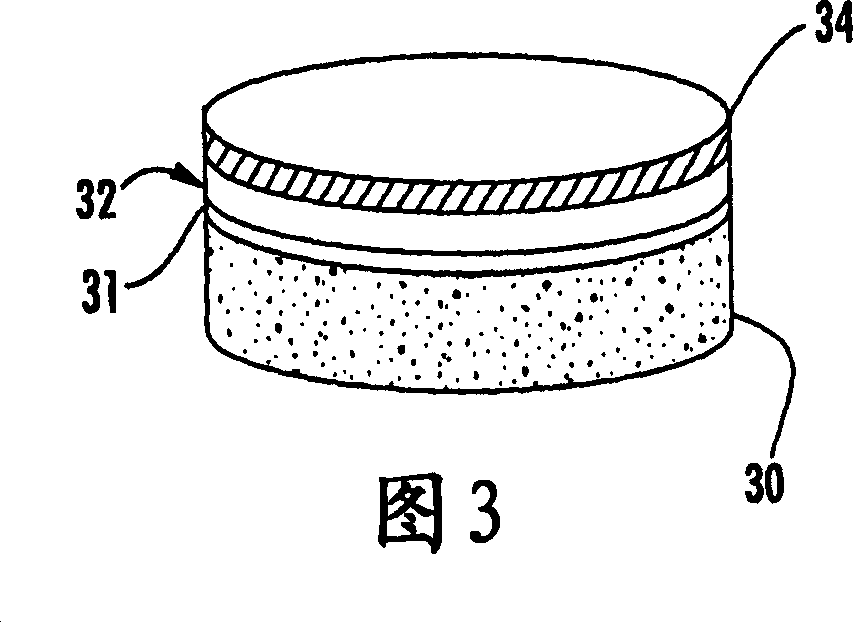Method for making group ó¾ nitride devices and devices produced thereby
A technology of nitrides and devices, applied in semiconductor/solid-state device manufacturing, semiconductor devices, electrical components, etc., can solve problems such as parasitic absorption, poor lattice matching, high expansion resistance, etc.
- Summary
- Abstract
- Description
- Claims
- Application Information
AI Technical Summary
Problems solved by technology
Method used
Image
Examples
Embodiment 1
[0110] LAO wafers were cleaned and placed in an Aixtron 200HT MOCVD reactor. The growth process follows standard GaN-on-sapphire growth steps. The substrate was first preheated to 1050°C for 10 minutes in a nitrogen atmosphere. Lower the temperature to 580 °C and grow an AlN low-temperature buffer layer with a thickness of 50 nm on the LAO wafer. Then, the temperature was raised to 950 °C and 800 nm of undoped GaN was grown on top of the AlN buffer layer. Reflection measurements are shown in the Figure 15 middle. The state of the film was smooth, and there was no peeling.
[0111] But TEM (Transmission Electron Microscopy) showed very different results. The AlN layer is poorly crystallized and provides a growth nucleus for the GaN film on top of it. Since the preferred orientation of AlN nuclei is along the c-axis [0001] direction, as a result, the GaN film is a c-plane (0001) film rather than an m-plane (10 1 0) Membrane. Therefore, there is no epitaxial relationship...
Embodiment 2
[0113] Fresh LAO wafers were cleaned and placed in an Aixtron 200HT MOCVD reactor. Following our method changed the growth steps. First, the step of preheating the substrate to 1050° C. for 10 minutes is eliminated. Instead, the wafer is directly heated to 900°C, and AlN deposition begins at this high temperature. After growing a 50 nm high temperature AlN buffer layer, the temperature was raised to 950 °C and an 800 nm n-doped GaN:Si layer was grown on top of the AlN layer. Reflectance measurements to monitor the smoothness of the film during growth ( Figure 16 ) shows a substantial improvement in film quality and is significantly different from that of Example 1.
[0114] The film was specular and showed no peeling after cooling to room temperature. Silicon doping has no effect on the quality of the film. When observed under a microscope, the GaN film was very uniform, and no cracks were found in the film. This is consistent with the fact that the thermal expansion co...
Embodiment 3
[0117] Once the basic growth process of n-doped GaN:Si epitaxial film is established, the growth of GaN film with complete p-n junction and quantum well structure is carried out. Fresh LAO wafers were cleaned and placed in an Aixtron 200HT MOCVD reactor. We used the growth procedure established in Example 2 to grow a fully structured GaN film. The wafer is directly heated to 900°C, and then a 50nm-thick AlN high-temperature buffer layer is deposited. After growing the AlN buffer layer, the temperature was raised to 950° C. in order to grow an 800 nm n-doped GaN:Si layer. Then, grow a quantum well structure consisting of two pairs of 10nm undoped GaN barriers and 5nm InGaN wells. A 10 nm AlGaN barrier layer was grown on top of the quantum well structure before growing a final 200 nm p-doped GaN:Mg cap layer.
[0118] Reflection measurement data ( Figure 17 ) showed an excellent growth state. After the growth of the p-n junction and MQW structure is completed, the furnace ...
PUM
| Property | Measurement | Unit |
|---|---|---|
| thickness | aaaaa | aaaaa |
Abstract
Description
Claims
Application Information
 Login to View More
Login to View More - R&D
- Intellectual Property
- Life Sciences
- Materials
- Tech Scout
- Unparalleled Data Quality
- Higher Quality Content
- 60% Fewer Hallucinations
Browse by: Latest US Patents, China's latest patents, Technical Efficacy Thesaurus, Application Domain, Technology Topic, Popular Technical Reports.
© 2025 PatSnap. All rights reserved.Legal|Privacy policy|Modern Slavery Act Transparency Statement|Sitemap|About US| Contact US: help@patsnap.com



